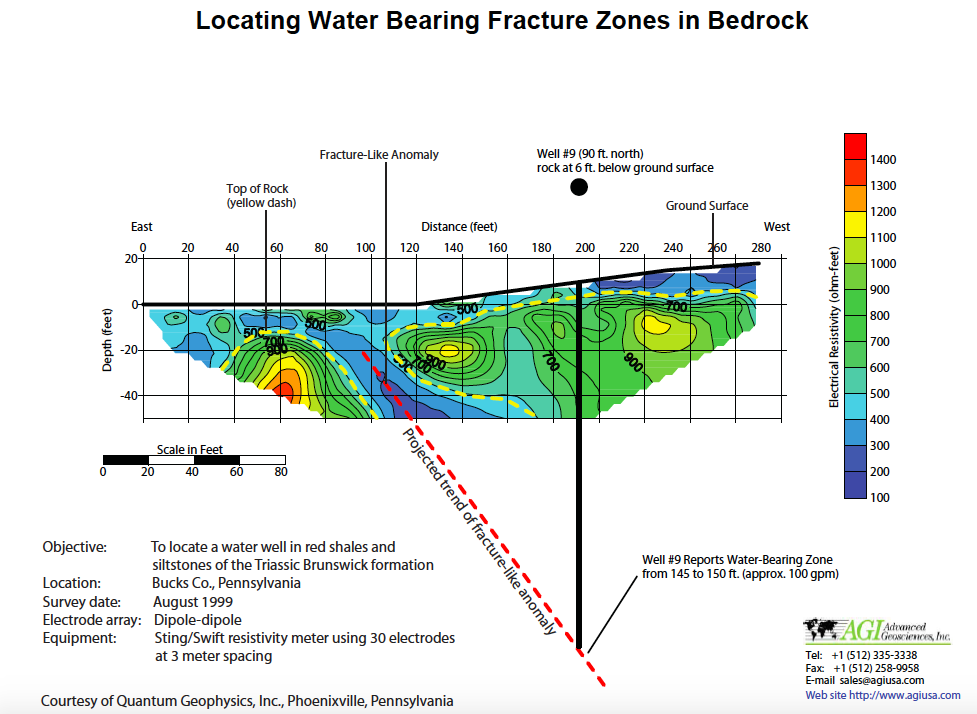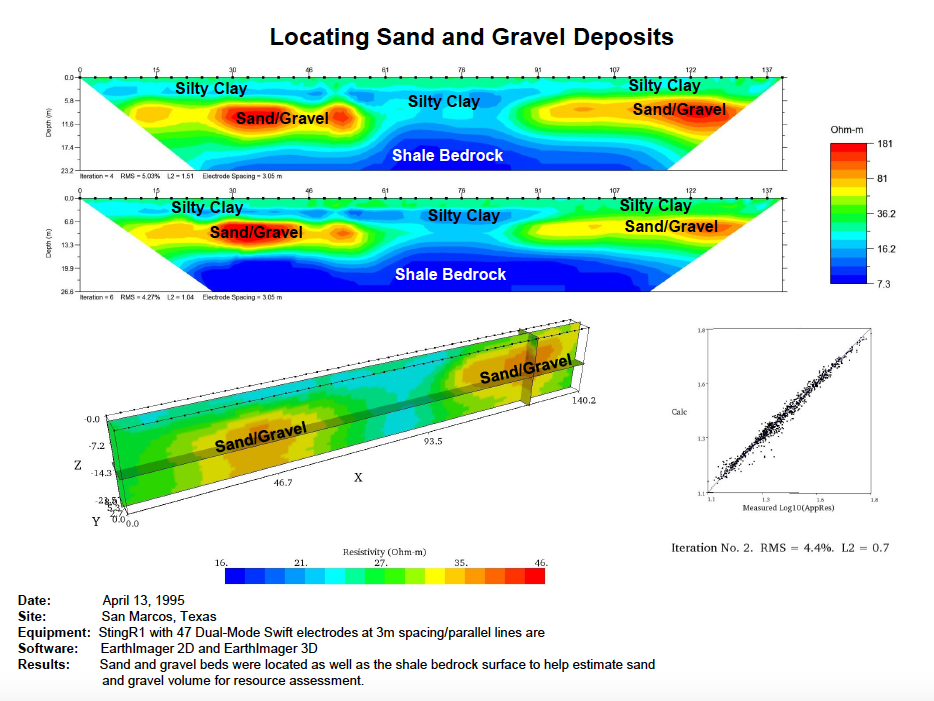Short Answer: In hard rock, you look for a low-resistive anomaly—typically vertically or inclined. In sediment—like clay—look for higher resistivity than the surrounding clay.
Long Answer:
First, you must know your surrounding geology
First, you must know your surrounding geology. Figuring out if you're looking for high or low resistivity depends on if you're looking at hard rock or sediment. The areas in the ground where groundwater can occur are in porous, fractured zones. Sand and gravel beds are porous and can contain water. Hard rock fracture zones are porous and can also contain water. Clay however, is not permeable and is unlikely to contain a significant amount of water.
Identifying groundwater in hard rock areas
The image below is representative of a type of hard bedrock. In such areas, water will be found in fracture zones in the bedrock. If you think of a fracture in a three dimensional way, it’s like a big sheet that cuts through the rock mass. In the 2D example below, the dotted red line is the fracture.

The color scale shows the electrical resistivity of the ground. The resistivity of the fracture will be lower than that of hard rock, because in hard rock the moisture will collect in the fissures of the fracture zone—the blue in the fracture is lower than the green in the hard rock surrounding the fracture. So why is it lower resistivity there? Because it contains moisture, and that moisture is more conductive than hard rock.
Identifying groundwater in sedimentary areas
In the 2D & 3D example below, the sand and gravel is shown in red, which means it’s somewhere between 80 and 180 ohm meters and has a higher soil resistivity value than the clay, which is in the 30s and lower.

Shale, which is a type of clay, is even lower—ranging from 7 to 16 ohm meters. Here, we’re looking for higher resistivity—the clay is more conductive (lower resistivity) than sand and gravel. This mapping shows you where you can locate the porous sand and gravel sediment beds which may hold water—these locations are where you want to drill through instead of the clay, which is very tight and does not have the permeability to let water flow. For this reason, you don’t want to drill into it because there may be moisture there, but water will not flow into the well.
Conclusion
The difference between the hard rock and the sediment beds is that in hard rock, you look for low resistance anomaly—typically vertically or inclined. When you’re in sediment, you’re looking for a higher resistivity than the surrounding clay.
